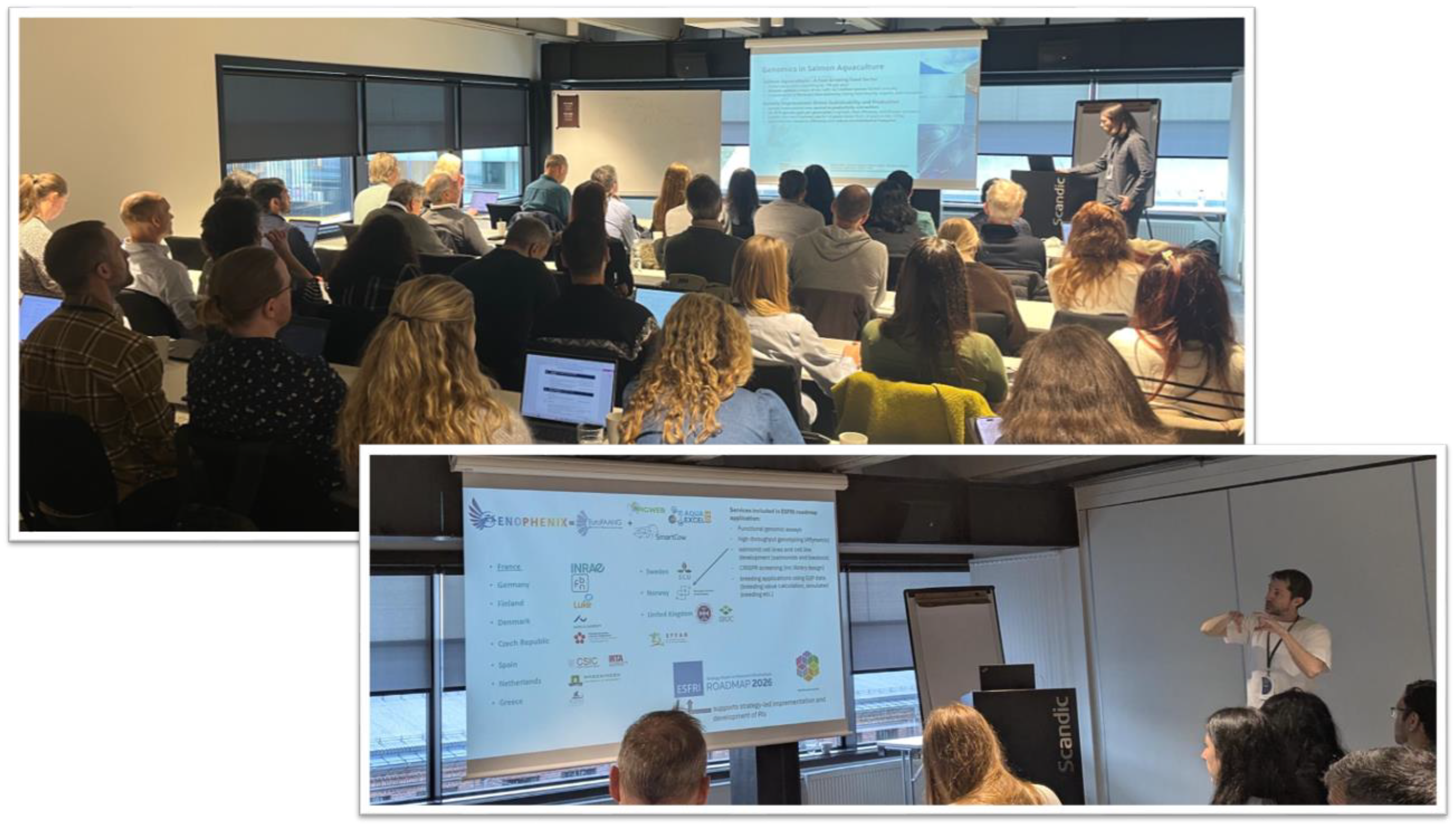Innovating Aquaculture with Big Data Resources

ELIXIR Norway hosted a successful Industry Engagement Day in Oslo, Norway, on 20 October 2025, bringing together 47 participants from across academia, industry, and funding organisations to explore how open genomic data can drive innovation in salmon-based aquaculture. The event featured participants from major aquaculture companies, including AquaGen, Mowi, Xelect, Benchmark, Cargill, SYSAAF, CAT, and the Salmon Living Lab, alongside researchers from leading institutes such as NMBU, Nofima, Roslin Institute, EMBL-EBI, and several more European universities. Representatives from FHF and the Research Council of Norway (NFR) were also present. The workshop opened with presentations from ELIXIR and EuroFAANG European research infrastructures, highlighting their shared mission to enhance data interoperability, promote FAIR data practices, and facilitate translational applications. Together, these infrastructures are helping to bridge the gap between academia and industry by enabling more effective use of genomic and phenotypic data for innovation. Building on these efforts, the forthcoming ELIXIR Domestic Animals Genome and Phenome Community offers a common arena where researchers and industry partners can align priorities and co-develop solutions for applied animal genomics. Scientific presentations followed, covering topics such as the current genomic resources for salmon, data standards and encrypted sharing, and machine learning approaches for functional annotation and disease resistance prediction. An interactive session on salmobase.org explored the latest tools for visualising salmon genomic and functional data. Researchers also presented new advances in single-cell and spatial transcriptomics, in vitro functional assays, and developing new organoid systems, showcasing the state-of-the-art in phenotyping tools. The day concluded with an open forum aimed at identifying the key priorities for improving data access, cross-sector collaboration, and integration of phenotypic data. A white paper capturing the workshop’s outcomes and perspectives will follow.